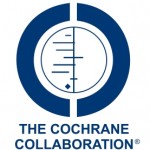
Sadly, despite the fact that dental caries is preventable and industrial nations have seen substantial falls in recent years there are still significance numbers of children with dental caries that remains untreated. While many of these can be managed with routine care other need additional behavioural management support, sedation or for a small (but significant) minority general anaesthesia. The aim of this Cochrane review was to evaluate the efficacy and relative efficacy of conscious sedation agents and dosages for behaviour management in paediatric dentistry
Detailed searches of Medline, EMbase, Cochrane Central Register of Controlled Trials, Dissertation Abstracts, SIGLE, the World Wide Web (Google) and the Community of Science Database were conducted Reference lists from relevant articles were scanned and the authors contacted to identify trials and obtain additional information. There were no language restrictions.
Randomised controlled trials of conscious sedation comparing two or more drugs/techniques/placebo undertaken by the dentist or one of the dental team in children up to 16 years of age were included with crossover trials being excluded
- Thirty-six studies (2810 participants) were included .
- Thirty trials (83%) were at high risk of bias and six (17%) were at unclear risk of bias.
- 28 different sedatives used with or without inhalational nitrous oxide.
- Dosages, mode of administration and time of administration varied widely.
Trials were grouped into placebo-controlled, dosage and head-to-head comparisons. Meta-analysis of the available data was possible for studies investigating oral midazolam vs placebo only.
They found
- Weak evidence from 5 small clinically heterogeneous trials at high risk of bias, that the use of oral midazolam in doses between 0.25 mg/kg to 0.75 mg/kg is associated with more co-operative behaviour compared to placebo; standardised mean difference (SMD) favoured midazolam (SMD 2.98, 95% confidence interval (CI) 1.58 to 4.37, P < 0.001, I² = 91%). This translates to an increase of approximately 1.8 points on the six-point Houpt behaviour scale.
- There is very weak evidence from two trials which could not be pooled that inhalational nitrous oxide is more effective than placebo.
The authors concluded that
There is some weak evidence that oral midazolam is an effective sedative agent for children undergoing dental treatment. There is very weak evidence that nitrous oxide inhalation may also be effective. There is a need for further well designed and well reported clinical trials to evaluate other potential sedation agents. Further recommendations for future research are described and it is suggested that future trials evaluate experimental regimens in comparison with oral midazolam or inhaled nitrous oxide
Lourenço-Matharu L, Ashley PF, Furness S. Sedation of children undergoing dental treatment. Cochrane Database of Systematic Reviews 2012, Issue 3. Art. No.: CD003877. DOI: 10.1002/14651858.CD003877.pub4.
In a previous post we noted some two guidelines for sedation, one from NICE and the other from the Scottish Dental Clinical Effectiveness Programmme.

[…] Dental Elf 15th March 2012 […]
[…] Weak evidence that oral midazolam is an effective sedative for children undergoing dental treatment […]